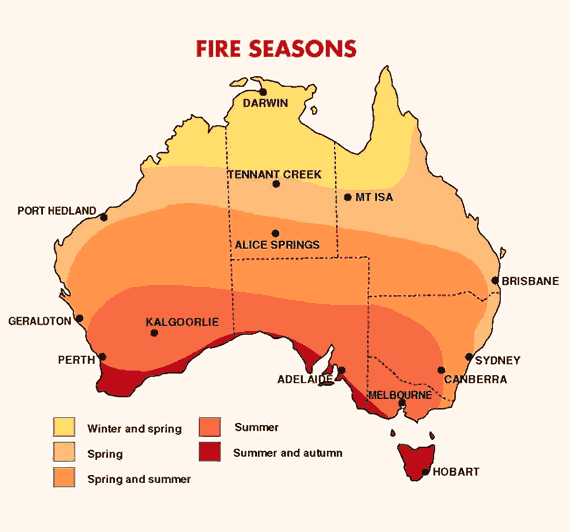Bushfires in Australia - the importance of choosing the right materials
What is a bushfire?
Bushfires are commonly referred to as fire that spreads throughout bushlands and areas with high vegetation density. A large number of these fires occur naturally due to weather conditions such as heat, dryness, etc - some are caused by humans. The amount of effort and resources needed to fight these fires rises every year as the damage to wildlife and environment worsens.
When and where do bushfires happen?
Bushfires are a phenomenon present nation-wide. Australia’s weather conditions are the perfect catalyst for these fires to happen. However, Australia is not the only country affected by bushfires, as it is also considered an ever-growing issue in the United States, Africa and some parts of Europe.
Due to Australia’s size and environmental diversity, we have bushfire seasons taking place at different times depending on the region. The Northern Territory’s fire season takes place during winter and spring whereas South Australia suffers from these fires during summer and autumn. This makes bushfires a constant and devastating issue in Australia throughout the year.
Image Source: Bureau of Meteorology, Australian Government
What are the consequences?
According to the New South Wales government, bushfires can cause poor air quality, affect human and wildlife health, and can have long-lasting impacts to soil and water quality, as well as being detrimental to plants and ecosystems.
Looking at the bushfires in spring and summer 2019-2020, an estimated amount of 2500 houses were destroyed and around 1 billion animals perished in the fires in NSW and Victoria alone. A large number of these animals and plants, such as koalas, became classified as endangered.
What is BAL rating? What is it used for?
BAL stands for Bushfire Attack Level. The Australian government uses this metric to quantify areas in regards to their bushfire risk. The higher the rating, the higher the risk. The following table shows the different risk levels and what kind of potential hazard they carry.
| BAL | Risk | Risk description |
|---|---|---|
| BAL-LOW | Lowest | Lowest risk from a potential fire |
| BAL-12.5 | Low | Potential embers during a fire |
| BAL-19 | Moderate | Embers and burning debris |
| BAL-29 | High | Embers, debris and heat |
| BAL-40 | Very high | Embers, debris, heat and potentially flames |
| BAL-FZ | Extreme | Exposed to the flames of a potential fire front |
How do timber, plastic composite materials, and Naxan perform against bushfires?
The large majority of timber and plastic composite materials oscillate between low and moderate heat resistance, making them a poor option for areas with a high bushfire risk.
On the other hand, Naxan has been certified with BAL-40, which means it is an excellent option for areas with a very high risk of bushfire attack.
What material should I go for?
If safety is one of your main priorities, Naxan is the way to go. Due to its composition of cellulose fibre derived from rice husk, Naxan is more resilient to external hazards than other materials. Rice husk is naturally gifted with some of the most impressive properties to protect the rice grain from harsh environmental conditions. These same properties make Naxan one of the finest and most sustainable alternatives on the market to timber decking and cladding.
Leading the way in sustainability, efficiency, and safety, when it comes to satisfying your every need, Naxan is the obvious choice.
Simple, Stylish, Sustainable



